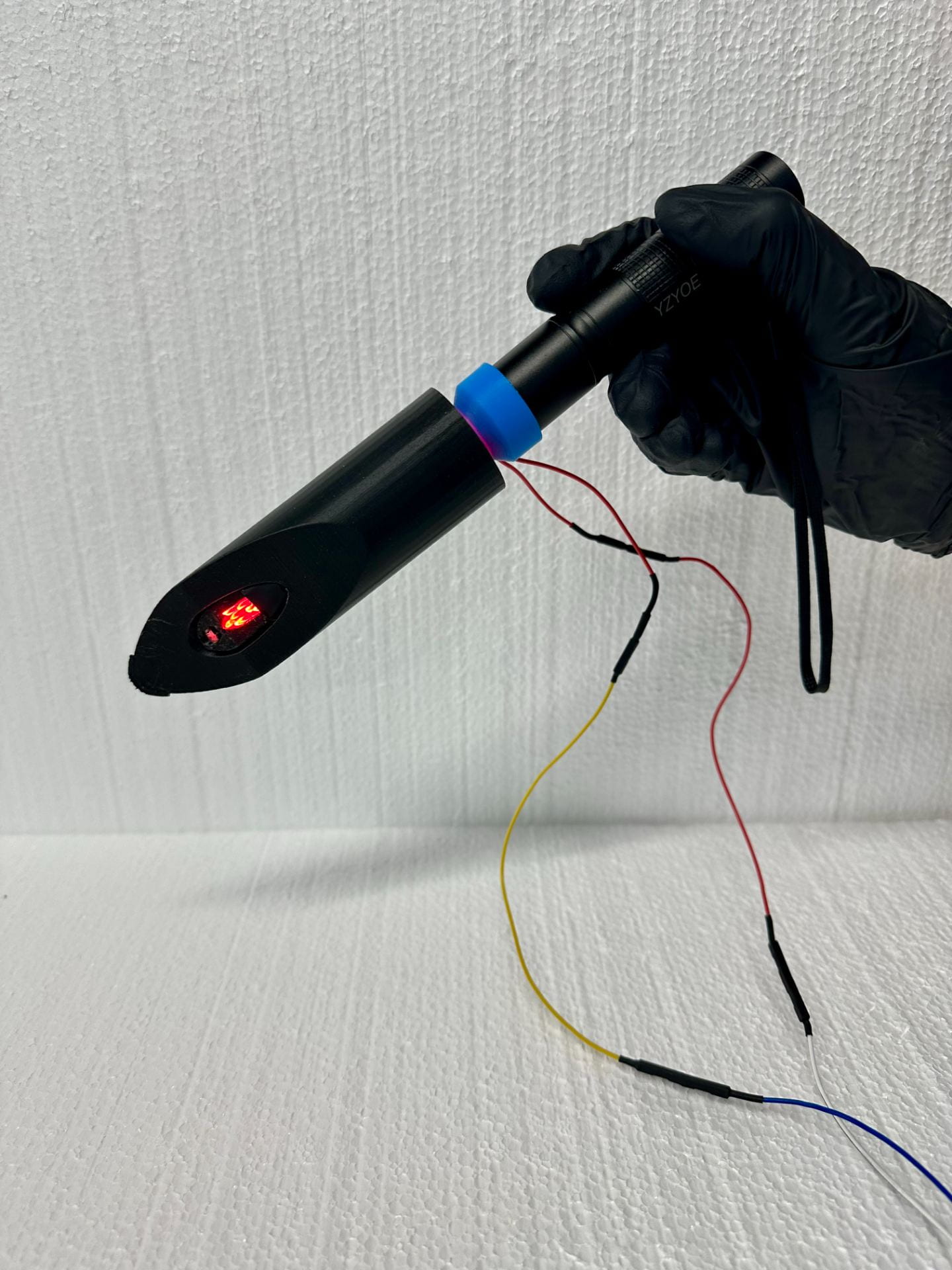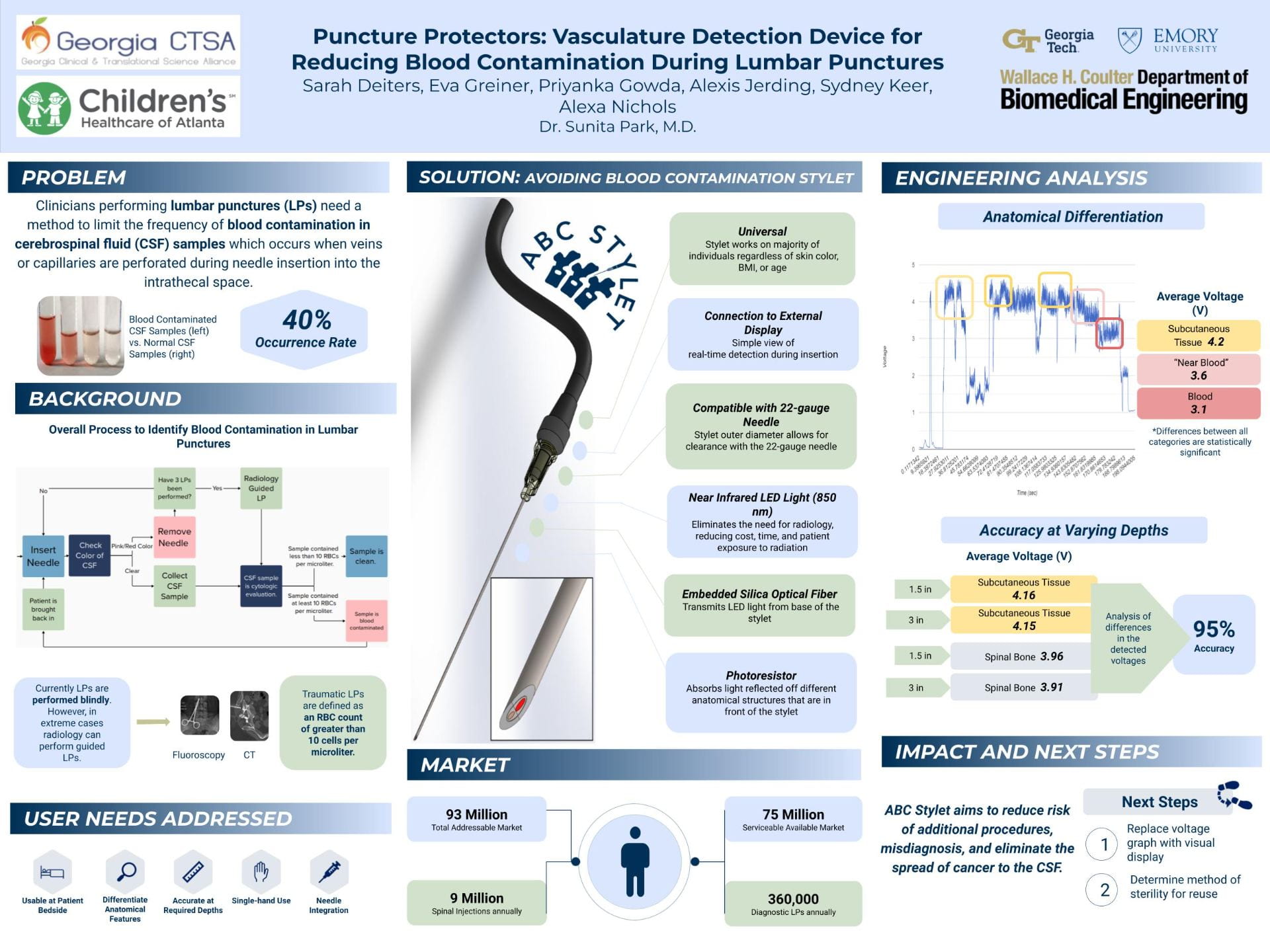Get to know our team on LinkedIN:
Alexa Nichols, Alexis Jerding, Eva Greiner, Priyanka Gowda, Sarah Deiters, Sydney Keer
Puncture Protectors
Reducing lumbar puncture blood contamination incidence rate using vasculature detection LED needle.
Project Description:
Our project focused on developing a device capable of preventing blood contamination in Lumbar Punctures (LPs). Blood contamination in cerebrospinal fluid (CSF) samples is defined as a red blood cell count of 10 cells or greater per microliter, otherwise known as a traumatic tap. Traumatic taps lead to difficulty in analyzing results for diagnostic testing and, more critically, can introduce cancer cells into the CSF in leukemia patients receiving LPs. Currently, traumatic taps occur in up to 40% of spinal taps. While radiology can be used to help decrease the incidence of blood contamination, it also requires additional cost, time, and radiation exposure to patients. To address these challenges, we created ABC Stylet – a revolutionary device capable of detecting and avoiding subcutaneous vasculature during needle insertion. ABC Stylet utilizes optical fibers, LED light, and a photo sensor to measure the variation in light reflectance off of anatomical landmarks traversing the lumbar portion of the back. The device has the potential to reduce the risk for additional diagnostic procedures and chemotherapy necessary to combat the introduction of cancer cells into the CSF.



